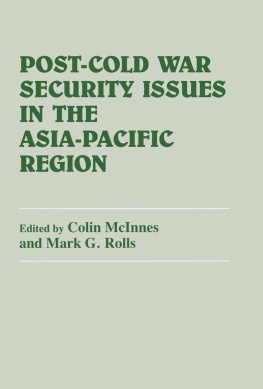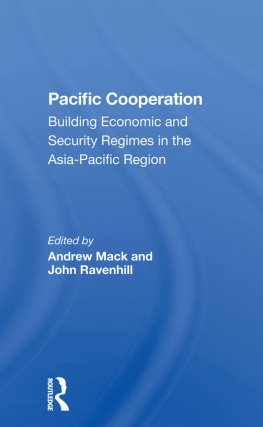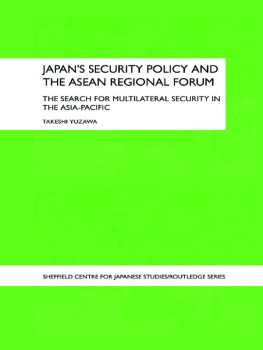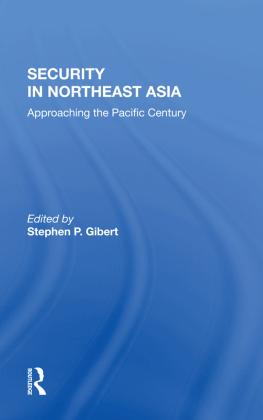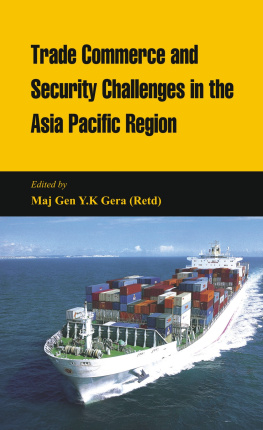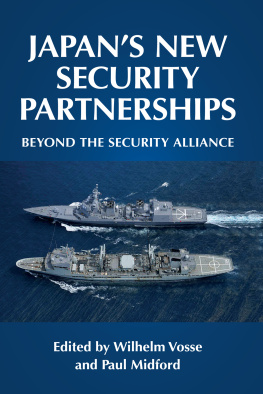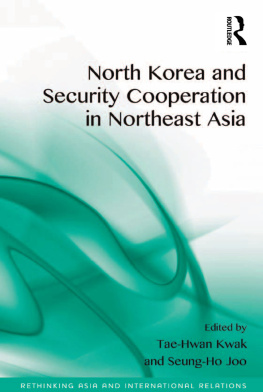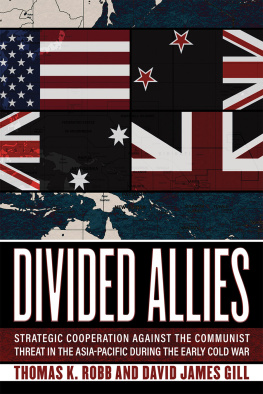First published in 1994 by
FRANK CASS & CO. LTD.
Published 2013 by Routledge
2 Park Square, Milton Park, Abingdon, Oxon OX14 4RN
711 Third Avenue, New York, NY, 10017, USA
Routledge is an imprint of the Taylor & Francis Group, an informa business
Copyright 1994 Frank Cass & Co. Ltd.
Library of Congress Cataloging-in-Publication Data
Applied for.
Post-Cold War security issues in the Asia-Pacific region/ edited by Colin McInncs and Mark G. Rolls.
Includes bibliographical references and index.
1. National sccurity Asia. 2. National sccurity Pacific Arca. 3. World politics 1989- I. Mclnnes. Colin. 11. Rolls, Mark G.. 1966-
| UA830.P67 1994 | 94-3570 |
| 355.03305dc20 | CIP |
British Library Cataloguing in Publication Data
Post-Cold War Security Issues in thc Asia-Pacific Region
I. McInncs, Colin 11. Rolls, Mark G.
327.116095
ISBN 13: 978-0-714-64574-2 (hbk)
ISBN 13: 978-0-714-6413 1-7 (pbk)
This group of studics first appeared in a special issuc on Post-Cold War Sccurity Issues in the Asia-Pacific Region in Contemporary Security Policy, Vol. 15, No. 2 (August 1994), published by Frank Cass & Co. Ltd.
All rights reserved. No part of this publication may he reproduced in unv form or hy any means, electronic, mechanical, photocopying, recording or otherwise,. without tht, prior permission of the publisher:
COLIN McINNES and MARK G. ROLLS
This is a collection of essays on contemporary international security issues in the Asia-Pacific region. If the end of the Cold War has dominated and transformed the security agenda in Europe and the Atlantic, then its effect on the Asia-Pacific region has been somewhat more equivocal. Although this collection uses the term post-Cold War, the phrase has somewhat different connotations for the Asia-Pacific region: it is used less in terms of defining the security agenda than as a description of the contemporary era. But this is not to say that the Asia-Pacific region has been unaffected by the end of the Cold War. Post-Cold War military restructuring will have a major impact on the US presence in the region; the disappearance of the communist threat assisted in undermining the legitimacy and credibility of the previously dominant Liberal Democratic Party in Japan; and communist North Koreas growing international isolation may have helped to spur its nuclear programme. Nevertheless, many of the dominant trends and influences in Asia-Pacific security pre-date the end of the Cold War, and although they may have been affected by the collapse of communism in Europe (directly or indirectly) they were not decisively determined by events there, the regions security agenda has not been re-cast, nor have the major issues been redefined.
Asia-Pacific security is a complex web of domestic, regional and global issues, with a number of distinct sub-regional agendas (for example the fear of nuclearization in the Korean Peninsula). This can make the identification of regional trends and issues difficult. Nevertheless, a number of trends may be identified as affecting the region as a whole, albeit to varying degrees. These trends pre-date the end of the Cold War, and although they may not have been unaffected by the collapse of communism in Europe, neither have they been dominated by those events. Firstly, doubts over the US military commitment have been growing, reinforced by its withdrawal from Subic Bay. Although US economic and political interests in the region may be increasing, as demonstrated by the 1993 meeting of the APEC (Asia-Pacific Economic Co-operation) forum in Seattle, US military strength in the region has declined and is set to fall yet further. Secondly, Soviet/Russian influence in the region has declined almost to the point of collapse, a result of both its growing domestic economic difficulties and its reduced naval presence in the region: forces at Cam Ranh Bay have been reduced since 1989, while the Pacific Fleet had fallen to such a state in 1993 that most of it was unseaworthy. As a result, Soviet/Russian political influence has also declined dramatically since its peak in the late 1970s/early 1980s. Clearly the decline in both Soviet/Russian influence and US military forces is linked to changes caused by the end of the Cold War; but both trends pre-dated and were to some extent independent of the collapse of communism in Europe.

